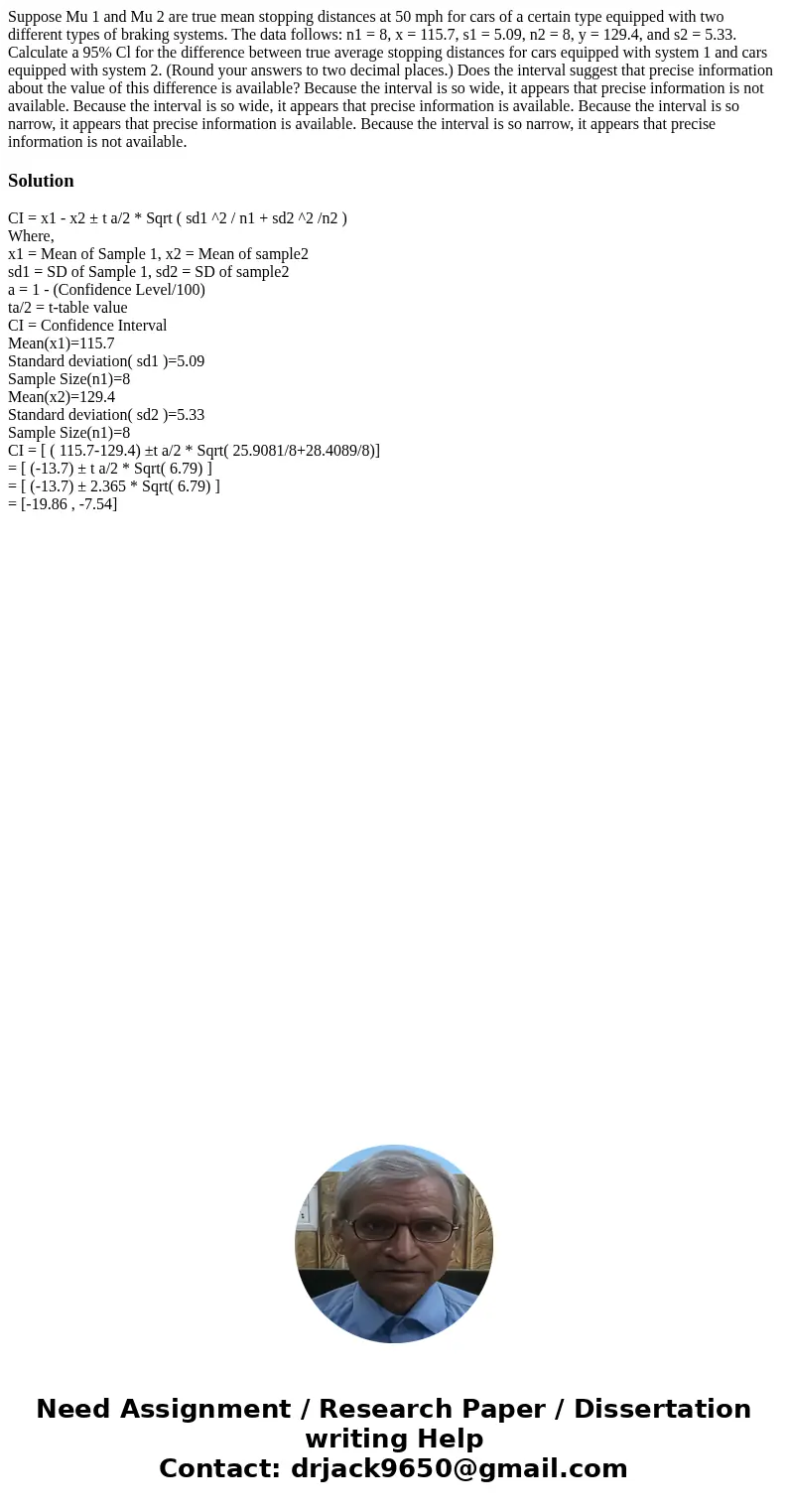Suppose Mu 1 and Mu 2 are true mean stopping distances at 50
Suppose Mu 1 and Mu 2 are true mean stopping distances at 50 mph for cars of a certain type equipped with two different types of braking systems. The data follows: n1 = 8, x = 115.7, s1 = 5.09, n2 = 8, y = 129.4, and s2 = 5.33. Calculate a 95% Cl for the difference between true average stopping distances for cars equipped with system 1 and cars equipped with system 2. (Round your answers to two decimal places.) Does the interval suggest that precise information about the value of this difference is available? Because the interval is so wide, it appears that precise information is not available. Because the interval is so wide, it appears that precise information is available. Because the interval is so narrow, it appears that precise information is available. Because the interval is so narrow, it appears that precise information is not available. 
Solution
CI = x1 - x2 ± t a/2 * Sqrt ( sd1 ^2 / n1 + sd2 ^2 /n2 )
Where,
x1 = Mean of Sample 1, x2 = Mean of sample2
sd1 = SD of Sample 1, sd2 = SD of sample2
a = 1 - (Confidence Level/100)
ta/2 = t-table value
CI = Confidence Interval
Mean(x1)=115.7
Standard deviation( sd1 )=5.09
Sample Size(n1)=8
Mean(x2)=129.4
Standard deviation( sd2 )=5.33
Sample Size(n1)=8
CI = [ ( 115.7-129.4) ±t a/2 * Sqrt( 25.9081/8+28.4089/8)]
= [ (-13.7) ± t a/2 * Sqrt( 6.79) ]
= [ (-13.7) ± 2.365 * Sqrt( 6.79) ]
= [-19.86 , -7.54]

 Homework Sourse
Homework Sourse